Oh my word would you look at that, it’s another RPG from our good friends over at Spiders. If you are unfamiliar with them (although how could you having read every single one of my reviews!) they are a small developer who has aspirations of being the next Bioware but not where near the prestige nor funding to achieve it. Their previous run of games, which are all startlingly similar in their construction, have all been firmly in the B-grade category; having many of the trappings of its AAA brethren but nowhere near the same level of polish, finesse or integration of mechanics that would make it seem somewhat similar. Over the years then I’ve grown to love seeing Spiders releasing things because it means that they’re somehow still making money despite peddling some of the most mediocre titles for years on end. However, and I feel strange for saying this, their latest game Greedfall actually manages to be a half decent game, even if the spectres of its past are still very much visible. So this may be the first time ever that I say I’m actually looking forward to seeing what Spiders comes up with next.
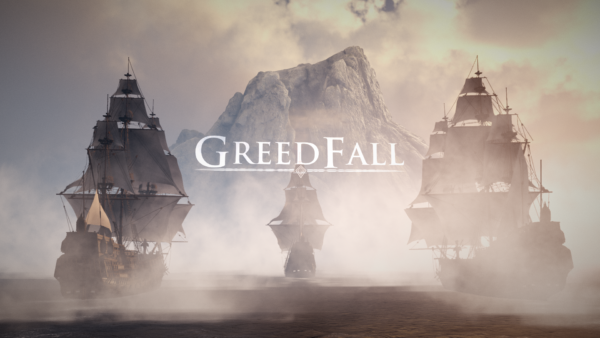
You are De Sardet, legate of the Congregation of Merchants and you’ve been tapped on the shoulder to accompany your cousin to a newly discovered island called Teer Fradee. He’s to be the governor there and it’s your job to assist him in ensuring that the will of the Congregation is executed over there. At the same time you’ve been tasked with trying to find a cure for the terrible sickness that has been plaguing everyone on the content, a disease that has been named the Malichor. Your journey is not simply one of bashing heads and saving those in distress; no instead you’re there to ensure political stability on the island, including finding a way for those of the continent to get along with the natives of the island. That’s going to be something of a challenge considering the number of different factions, all of whom have their own ideas of what this new island should be used for.
The graphics of Greedfall are brought to us by Spiders’ own game engine called Silk which itself was based off the free Sony engine called PhyreEngine. The graphics it delivers though are more akin to the best we’d seen out of the previous generation, although when compared to previous Spiders titles it’s definitely a major step up. Whilst there’s a healthy dose of asset reuse the environments are still more detailed than they ever have been before. They will start to blend into each other after a while as all the forests look pretty much the same as do the towns save for the few custom designed areas that each of them has. Heck even the various governor houses are basically identical save for the texture jobs. There’s also some noticeable differences in the game’s framerate and the physics engine’s rate which is probably most notable in your cape which stutters along rather than flowing like you’d expect. Credit where it’s due though this is a pretty big step up for Spiders and I’m not one to chide someone for making progress.
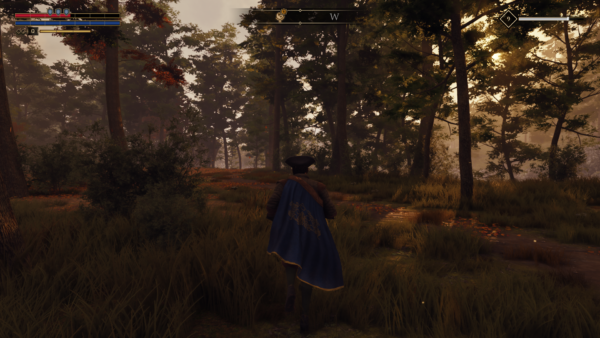
It seems that after making ostensibly the same game 4 times over Spiders has finally managed to streamline it to the point where they’ve actually managed to make most of the systems work properly. You’re still going to have to choose to main one of three character classes, each of which largely fits into the regular RPG tropes. The multiple different attribute and talent systems make a return although at least this time around there’s a respec facility that gives you the ability to tweak things if you happen to make a wrong decision early on. You’ll still be saddled with AI companions that you have zero control over however and their AI hasn’t really improved much in the years since the Technomancer. Crafting once again makes a return although it suffers from the same problems at it always has. Overall whilst the theme of “put everything in that the AAA guys do” is still very much prevalent in Greedfall at least this time it’s a lot better done making for a game that’s actually kind of fun to play.
Combat is still a very simplistic affair, being mostly focus on you whacking at enemies and dodging their more obvious telegraphed attacks whilst waiting for your abilities to come off cooldown. The game asks you what archetype you want to be at the start and, for a change, I decided to see what being a spellcaster would be like. To their credit this was actually quite a viable build although, unfortunately, it still meant that I’d spend about half of most combat encounters meleeing things as I waited for my mana to regen. However there were also times that I could completely wipe out an entire group with 2 spells, something which I sorely needed to do later in the game when I was over everything and just wanted to complete the story. I still have the feeling that going for the warrior tree might’ve been the smarter move overall as it seems all the good weapons and armor require you to invest in points that that tree makes use of. Having to split my points a bit between things to support my spellcasting whilst also wearing armour that wasn’t total shit was a bit of a pain, although it wasn’t too much of a drag for the last 5 or so hours of my playthrough.
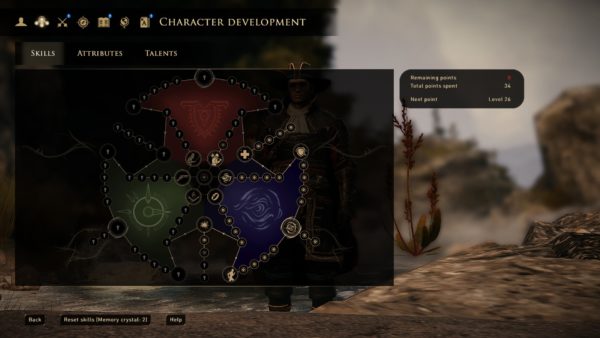
Like most things in Greedfall though the combat gets extremely repetitve after not too long. The enemy variety is very low and doesn’t really change much throughout the game. This unfortunately means that the increased challenge usually comes from the game throwing more of those enemies at you or simply giving them a truckload more health and armour. This turns most fights into drawn out slugfests and with an unfortunate late of variety in spells and skills there’s not much to really keep you interested. To be sure I could’ve easily respecced between any of the 3 trees anytime I wanted to (you’ll pick up more than enough items to cover them all off) but I shouldn’t have to completely up-end my build just to keep things interesting. The games that Greedfall aspires to be (Dragonfall: Origins should I take a wild guess) managed to keep me interested without the need for me to change things up so I definitely feel like it’s a lack of time and/or resources on Spiders’ part here.
Pro-tip: there’s basically no reason to invest any points in crafting as there’s NPCs who can craft everything for you. Not only that but all crafting recipes are available to you right from the get-go so there’s really nothing else for you to do but to go and find the required mats. This is made incredibly easy by the fact that every time you travel you have to camp, which also brings with it a vendor who always has every crafting item in stock. It’s probably still worth picking up various mats along the way as you’ll sometimes need to craft something or use them to complete a quest but other than that you’re going to end up with a bunch of materials that you’re not going to have any use for. Thankfully they don’t weigh particularly much so you can still indulge in your packrat ways if you so wish. Once I’d found a good set of unique armour and an associated weapon I maxed out crafting to upgrade everything to the fullest and then respecced into something more useful right away. I think I ended up using that setup for over half the game.
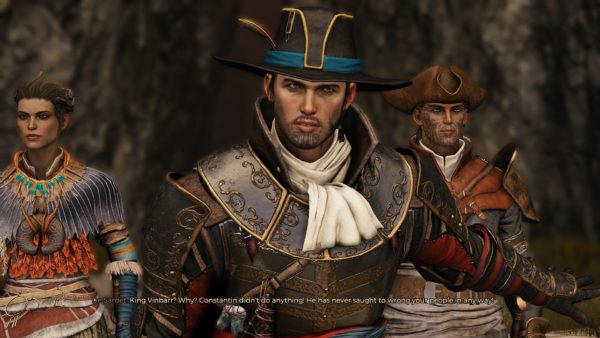
Progression is a muddled affair as you’ll get skill points every level (and can even find “skill shrines” that give you additional points) but will only get attribute and talent points every so often. This means that if you find a sweet piece of armour that needs endurance 2 it’s not going to be 2 levels to use it, no more like 5+. Whilst this does mean that the early game is a bit of a balancing act to get the most out of the loot you have it ends up being a pretty big source of frustration later in the game. This is most apparent when all the good loot requires the higher tiers of attributes unlocked or not having a particular skill (like say vigor) levelled up enough means taking the very long way around something. Of course I totally get the idea that this is meant to make you specialise in something but given the loot isn’t particularly diverse it kind of means that non-warrior builds are less viable than their melee focused counter-parts. This is honestly par for the course with Spiders games though so I really shouldn’t be surprised.
There have been some major quality of life improvements over previous Spiders games like, finally, a fast travel system. Unfortunately this is tied up with a completely unnecessary (but mandatory) “camp” intermediate level which basically means you’ll always see 2 load screens unless you’re travelling within a current map. It would be so, so much better if you had the choice of camping or not as later in the game there’s really not a lot of reason to spend any time at camp. Other improvements include item comparison, so you can see if what you’re looking at is an upgrade, a useable map and a UI that isn’t complete garbage. It’s still probably about 5+ years behind what I’d call AAA but at the very least we’re streets ahead of what I’ve come to expect from this developer.
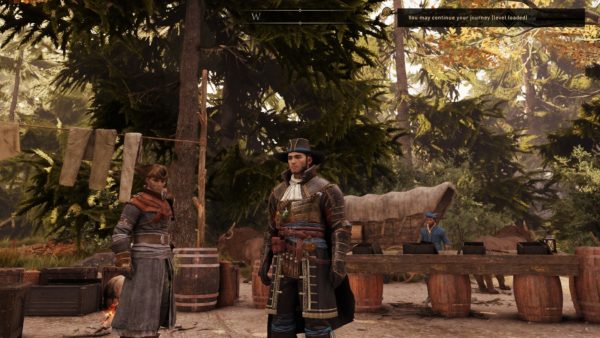
Of course the game is still riddled with issues, some of which may be due to their continued use of the Silk engine or perhaps just straight up lack of polish. Pathing is a major issue and you’ll routinely get cornered or stuck by NPCs or your companions alike although they’ll usually figure out you’re trying to get past them after a 30 seconds or so. There are missions in the game that are obviously related to each other but haven’t had alternative voice lines recorded from them so you’ll often have your character experiencing weird bouts of amnesia about things that they really should know about. Whilst the level of the jank in the combat is certainly decreased the same issues in Spiders’ previous games still exist, like spells or melee hits just straight up not connecting for no reason at all and enemies straight up ignoring terrain to get at you. A lot of these things can be patched out though and hopefully Spiders does invest some time between this game and the next on improving the overall experience.
The story is passable as it’s rather predictable but at least many of the characters are given time to develop and there appears to be a much richer world behind everything than previous Spiders’ games had. Even with that said though there were a good number of characters I was just straight up not interested in talking to, including 2 of the companions that are introduced much later in the game and as such feel like strangers in your tightly knit crew. I will admit that I played for much, much longer than I would have otherwise just because I wanted to see how everything panned out but even that became quite the chore towards the end. Overall it’s a vast improvement but there’s still a lot of room to grow here.
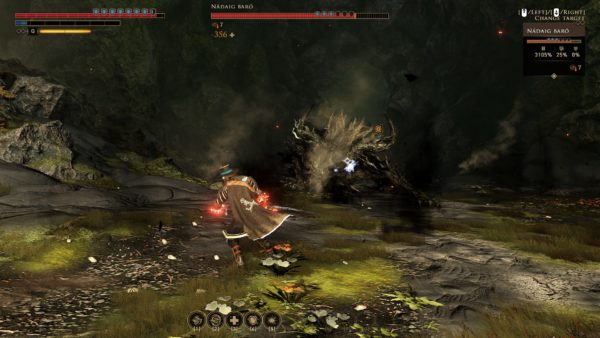
After 7 years of not really improving at all it’s heartening to see signs of life from the Spiders team. Whilst Greedfall is certainly still in B-grade territory it’s very, achingly close to tipping over to into A. There’s still tons of room for improvement here and a “less is more” approach could still help immensely in focusing more on what matters to the core game rather than trying to emulate what others deliver in the same kind of experience. Still I hope that the success that Spiders has found with Greedfall either gives them bigger budgets or allows them to attract more top tier talent as it’s clear there’s something going on there, they just need the right guidance and resources to make something truly AAA worthy.
Rating: 7.0/10
Greedfall is available on PC, PlayStation 4 and XboxOne right now for $69.95. Game was played on the PC with a total of 22 hours play time and 51% of the achievements unlocked.



